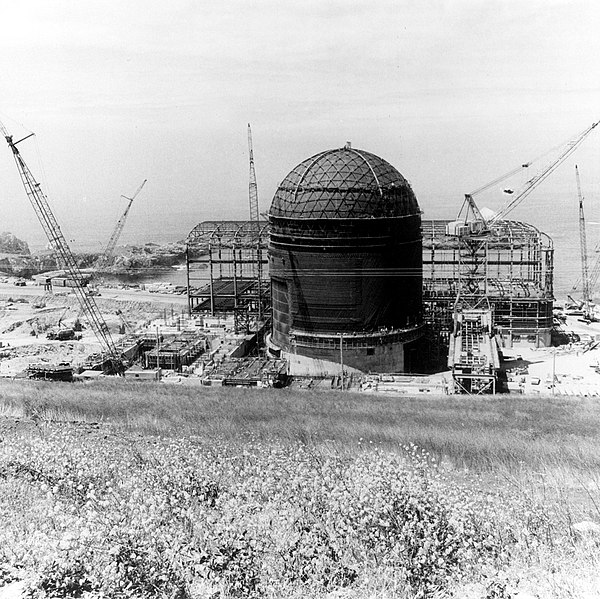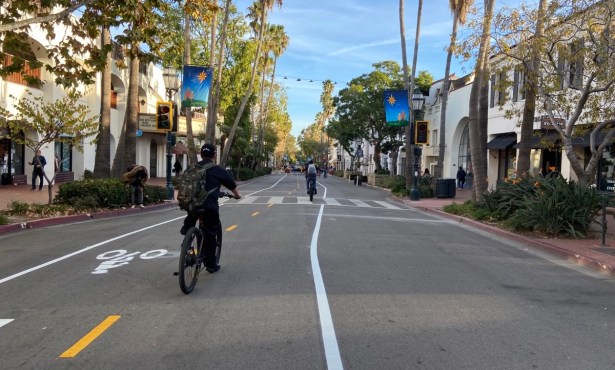The Dangers of Not Testing Diablo’s Reactor Unit 1
Test to Avoid a Fukushima-Type Release at Diablo Canyon Nuclear Power Plant

Open Letter to Governor Gavin Newsom and Staff:
Thanks for your many efforts to create a better world for us, our children, and future generations, it’s very much appreciated.
Here in California, we continue to over-pump our precious freshwater aquifers that are used to irrigate vegetables, fruits, and nuts. The water is also used for livestock and human consumption.
When too much freshwater is pumped from the state’s coastal aquifers, saltwater migrates landward by a process referred to as “saltwater intrusion.” Saltwater intrusion is also driven by the rapid melting of our world’s polar caps in conjunction with sea-level rise due to the thermal expansion of ocean water.
As if sea-level rise and saltwater intrusion aren’t bad enough, there’s another issue that’s even more problematic. I’m talking about the specter of “radioactive saltwater intrusion” into California’s coastal freshwater aquifers!
As you know, the March 11, 2011, magnitude 9.0 earthquake and tsunami that erupted off of Japan’s Tōhoku Pacific Coastline led to the meltdown of four nuclear reactors at the Fukushima-Daiichi power plant.
Because melted reactor cores cannot be allowed to spew radioactive materials into the atmosphere, they must be covered with water. This highly contaminated water has been leaking from the plant’s molten cores and mixing with both ground and sea water.
“All radiation is unsafe,” said Arnie Gundersen, former nuclear industry executive. “There is no non-harmful level. The faucet is still on and Fukushima continues to pollute the Pacific Ocean.”
If PG&E’s Diablo Canyon Nuclear Power Plant (DCNPP) were to experience a Fukushima-like mega-thrust earthquake and/or tsunami, one or both of Diablo’s embrittled nuclear reactors could go critical and suffer a catastrophic meltdown.
At that point, we too would be forced to cover the melted radioactive cores with copious amounts of water. Out of necessity, this highly contaminated water would be dumped directly into the Pacific Ocean. That’s when a lot of California’s coastal communities will be threatened by the frightening prospect of “radioactive saltwater intrusion.”
Unfortunately, it turns out that one radioactive isotope, tritium, a byproduct of nuclear fission with a half-life of around 12 years, cannot be removed from the water. Simply put, no one will knowingly drink, cook, or bathe in toxic, tritium-laced groundwater.
Talking about Tokyo Electric Power Company’s 1.3 million tonnes of radioactive water that’s stored onsite in over 1,000 large tanks, Japan’s Environment Minister, Akihiro Nishimura, recently said, “It is estimated that it will take about 30 years to release it all.”
PG&E has repeatedly postponed essential metallurgical tests and ultrasound inspections of its Unit 1 reactor for over two decades. The question is why are they so reluctant to test their nuclear plant’s Unit 1 reactor? What are they afraid of?
In a 46-page report by Digby Macdonald, a professor in nuclear engineering and materials science at University of California, Berkeley, it stated that the continued operation of Diablo’s Unit 1 containment vessel “poses an unreasonable risk to public health and safety due to serious indications of an unacceptable degree of embrittlement.”
Fortunately, there’s still time during Unit 1’s “fifty-day refueling shutdown,” which started on October 1, for you, and the Nuclear Regulatory Commission to change your minds and do the right thing. Test PG&E’s Unit 1 nuclear reactor ASAP to avoid the very real possibility of “radioactive contamination” of our state’s coastal freshwater aquifers.



